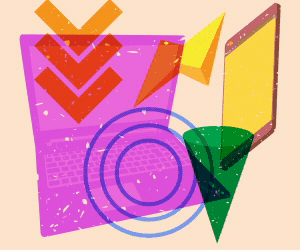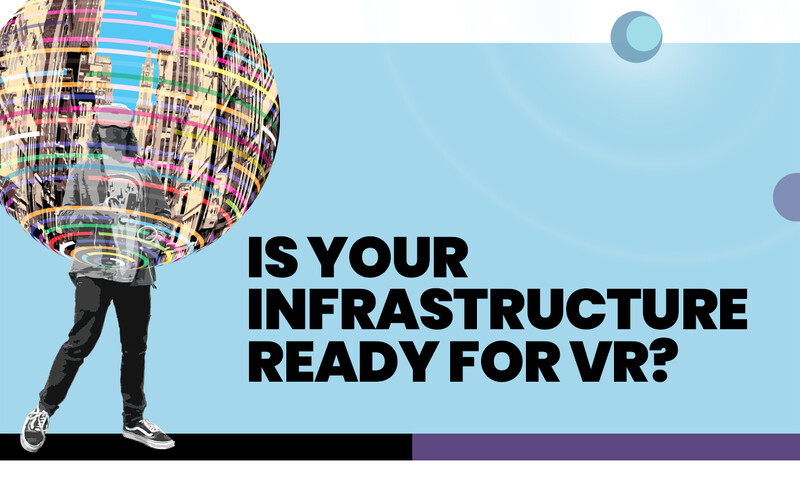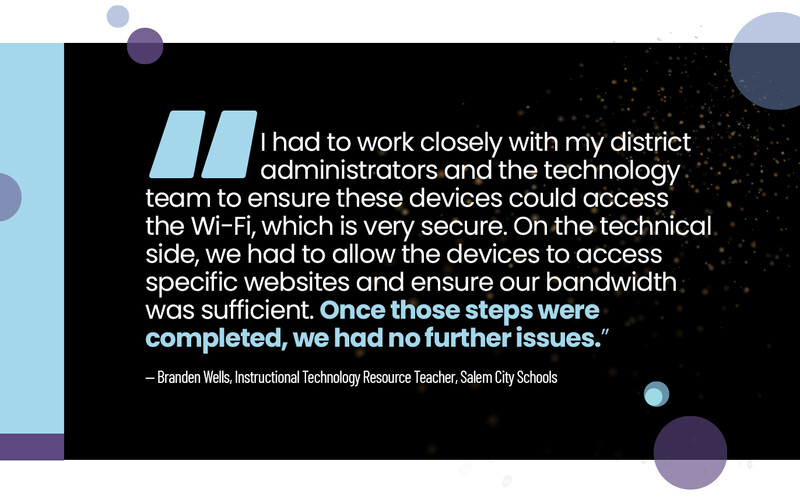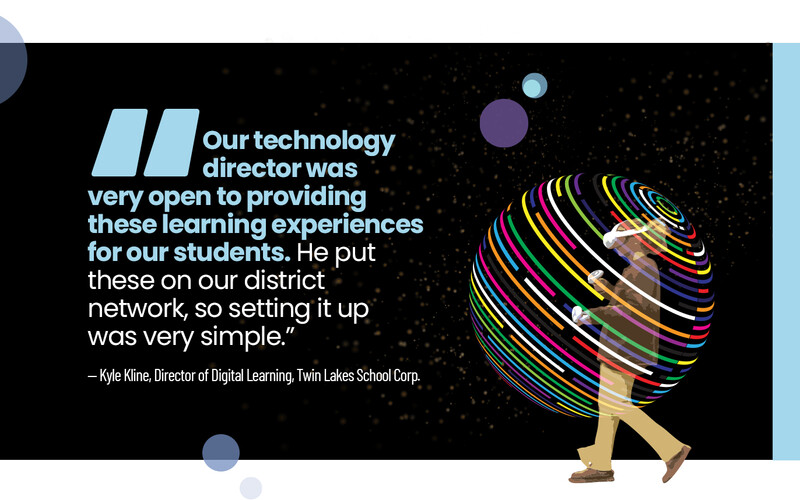“You can give kids access to experiences that they would otherwise never have because of the cost of traveling, the liabilities and the limitations,” says Jessica Garner, senior director of innovative learning at ISTE+ASCD.
Virtual Reality Headsets Allow Students To Experience the World
In Kentucky, students can use Meta Quest VR headsets to visit area technology centers, where they learn about careers in construction, marine transportation and tourism, all without leaving the classroom.
Beyond career exploration, Wells says, these types of trips open diverse new avenues of learning.
“Outer space is a really great topic” for the younger grades, he notes. “If they’re learning about planets in second or third grade, I can show them those planets in VR as 3D objects and turn an abstract concept into reality.”
In other cases, students can explore the rainforest. “They look around and see different wildlife jumping through the trees, and they hear bird calls, and you get a sense of how alive that ecosystem is,” Wells says.
At Maine’s Piscataquis Community Elementary School, VR field trips help to contextualize learning. With ClassVR headsets, “you could go inside a volcano to learn about volcanic activity,” says Principal Anita Wright.
When the children were raising money to buy windows and doors for a school in Tanzania, a missionary with a GoPro was able to livestream a VR visit. Our students Zoomed with the students in Tanzania, and they asked questions like, ‘Would you ever want to come to see us in Tanzania?’ And of course, the students here said, ‘Yeah, we’d do that!’” Wright says. “The experience made it real for them.”
Meanwhile, teachers at Twin Lakes School Corp. in Indiana leverage VR to help kids explore inside the human body. They also compare volcanoes around the world and visit natural-disaster sites.
In ClassVR-assisted biology lessons, “they can track their way through the digestive system,” says Kyle Kline, director of digital learning. And when kids learn about Earth science, “we’ll travel to volcanoes around the globe and show them a variety of different locations, and they see that not all volcanoes look alike.”
With VR, natural disasters offer another learning opportunity.
“Where we live, we have some tornadoes, but our students don’t understand hurricanes and tsunamis. It’s interesting for them to be able to see these locations that are close to water,” Kline says.
$65.55 Billion
The expected market for virtual reality in education by 2032, up from $17.2 billion in 2024
Source: fortunebusinessinsights.com, “Virtual Reality in Education Market Size, Share & Industry Analysis,” July 28, 2025
Schools Reap Accessibility Benefits From Virtual Reality Technology
Schools can use VR field trips as a budget-friendly way to expand students’ learning experiences.
With ClassVR, Piscataquis students can take trips that would otherwise be impossible. “We can’t go to New York City and just walk through the city with two teachers and 15 kids. We’re not going to be able to do that in real life, but we were able to do it with a 360 experience,” says Jennifer Watson, technology director for the district.
In computer science classes, Wells uses VR to open new vistas. “Let’s go inside of a computer and identify the components,” he says. “Or let’s go see some coding inspiration. I would show them something like an underwater reef scene, and then the students could code that same animation into Scratch coding using blocks of code.”
Kline sees engagement as the biggest benefit, connecting with kids in a way that excites their interest.
“When we can show them places or things they’re not familiar with, that opens up a dialogue,” he says. “We can discuss the differences in how people live around the globe versus how they live here: how traveling to school is different, how the food would be different, how the houses look different.”
SUBSCRIBE: Sign up for the EdTech newsletter for weekly updates.
The Piscataquis team saw this firsthand when kids who’d been reading a book set in New York City took a virtual tour of the Big Apple. “These pre-K students in rural Maine had never been to a city,” Wright says.
When they first got into NYC (via VR), “that room was completely silent. The pre-K kids were like, ‘Whoa, it is busy!’” Watson says. “Then, we rewatched the video and they were super chatty: ‘Look, there’s a cop over here!’ And one of the kids was jumping up and pointing: ‘I saw McDonald’s coming up!’”
Bolstered by the VR experience, “the book made more sense to them,” she says.
At ISTE+ASCD, Garner underscores an equity angle. Consider, for example, the common (physical) field trip to a local historical site. “If you have students with special needs who would struggle to navigate one of those physical sites, this becomes open and accessible with VR to any student who has access to that device,” she says.
And there are other unexpected benefits. VR for college tours? Why not, Garner asks.
“Typically, you would be limited to visiting schools that were right in your area. You would never think about taking students to a school in another country on a field trip,” she says.
From rainforests to college tours, “with VR, you don’t have those geographical boundaries.”
















